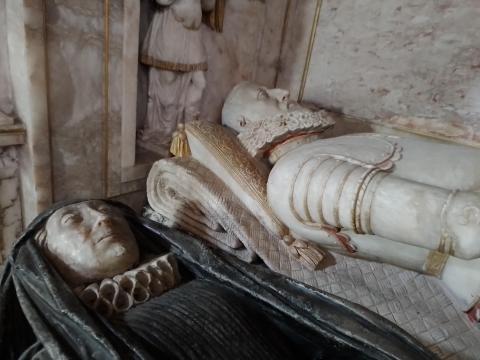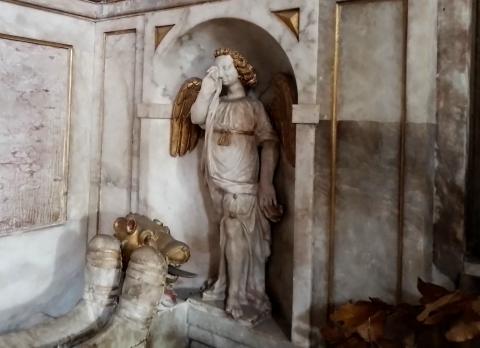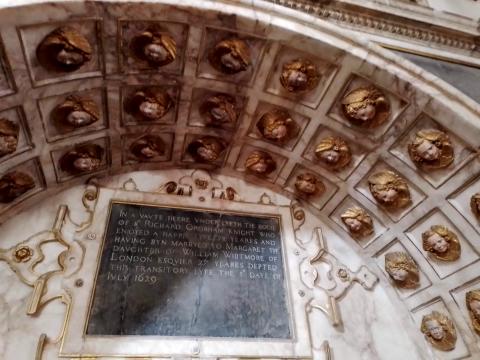Great Wishford's Great Tomb

At the Church of St Giles, in the delightfully named village of Great Wishford in Wiltshire’s Wylye Valley, are some grand old tombs. One in particular, of Sir Richard and Lady Grobham, is expertly carved, and even allows the interpretation of expression. Although they died in or around 1629, their fashions are very much of the Elizabethan period when both were young. It appears that Richard made his money by finding silver bars in a wrecked Spanish galleon while in the employ of Sir Thomas Gorges as his steward. This providentially provided for his own fortune, and knighthood, so he could have a steward of his own. So are these the expressions of a couple upon whom God’s good providence smiled? Is it piety emanating from their faces, or smugness? Perhaps it is harder to read faces, even carved ones, than I thought.

Curiously, the tomb has about it some carved angels, which was a little risqué in the seventeenth century, and liable to be attacked by diligent agents of Reformation. These angels appear to be weeping, presumably because Sir Richard and his lady wife have carked, and they miss dearly them. Dozens more cherubic heads peer down from the curved roof, looking slightly less grief-stricken. Whether the pair’s tenants and servants mourned their passing with as much enthusiasm as this angelic host would be a far better test of their characters and reputation.

Of course, angels do not weep when we die, assuming that their angelic bodies can generate, and then proceed to shed, tears. They either observe our posthumous judgement for having an outstanding sin-debt, or they behold us in heaven enjoying the gracious favour of their Lord and ours. The angels rejoice when a sinner repents, but I see no record of sorrow when one dies.

- Log in to post comments


 Sunday Worship 10.45am & 6.00pm
Sunday Worship 10.45am & 6.00pm